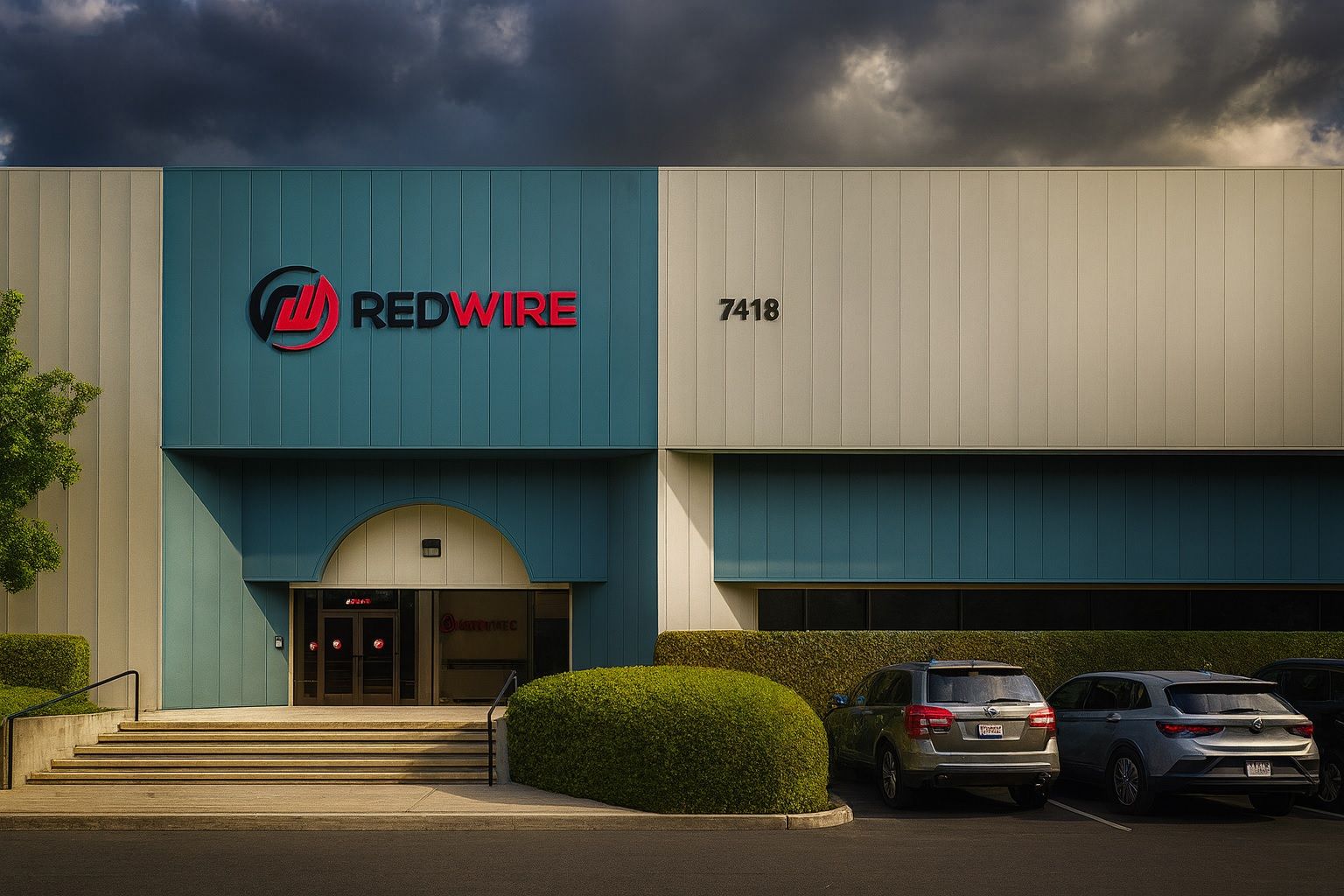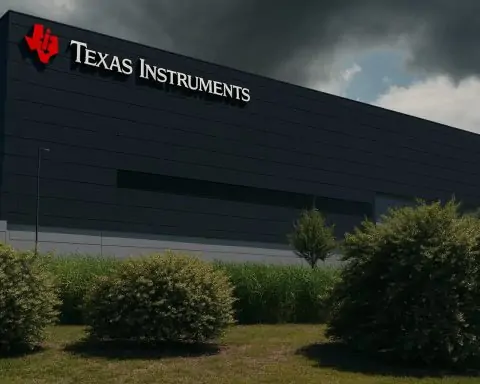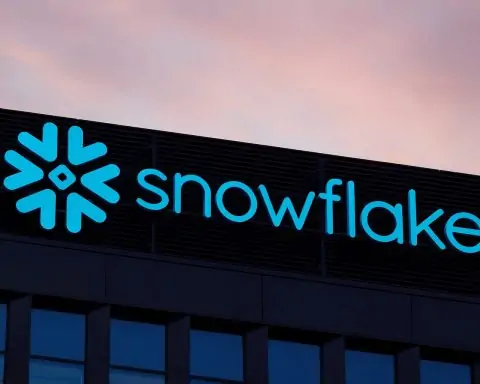Redwire (NASDAQ:RDW) closed about $9.40 on Oct 15, down ~1.5% on the day [1] (after a 5.3% pop on Oct 14). The stock is volatile: it fell ~9.4% in one day and ~18.6% over a week after recent corporate news [2]. Year-to-date, RDW is still down ~42% (despite a 12.8% one-year gain) [3]. Major catalysts include a new Oct 14 partnership with Red Cat to pair Redwire’s Stalker drone with Red Cat’s Black Widow quadcopter [4], a Sept 25 contract to supply solar arrays for Axiom Space’s station module, and the Aug launch of SpaceMD, Redwire’s new pharmaceutical subsidiary (commercializing its PIL-BOX crystal-farming lab) [5]. Leadership changes also loomed: on Oct 7 Redwire announced two veteran directors joining its board and two departing [6], and CFO Jonathan Baliff will retire Nov. 30 [7]. Analysts’ consensus 12-month target is ~$18–$19 [8] [9] (implying ~2× upside); Wall Street has mostly “Buy” ratings on RDW, though Bank of America recently kept an Underperform stance [10].
Redwire stock’s recent tumble reflects short-term jitters, but many experts still see long-term potential. TechStock² notes that despite the stock’s pullback, RDW has delivered 12.8% total return in one year and 264% in three years [11]. Bulls point to Redwire’s expanding space business and new ventures (like SpaceMD/PIL-BOX royalties) to argue RDW is undervalued [12] [13]. Indeed, one DCF-based analysis pegs fair value at ~$18.20 (vs today’s ~$9.50) [14] and notes Redwire’s price/sales (~5.8×) is high vs aerospace peers [15] – signaling expensive stock or optimistic growth prospects. TS2’s analysts also cite a popular “fair value” around $18.06 (suggesting current ~$8.74 is cheap) [16]. On the other hand, skeptics warn of execution risks and contract delays, and point out Redwire is still unprofitable (Q2’25 loss $97M on $61.8M revenue) [17] [18]. Bank of America’s Oct 10 report kept an Underperform rating, reflecting caution in the near term [19].
Stock Performance & Market Reaction: Redwire’s shares have gyrated on every news beat. After climbing in early October, RDW slid ~9–10% on Oct 6 and 7 (around earnings season), then jumped ~35% through Oct 7 as investors digested solid backlog guidance. On Oct 10 BofA’s underperform note knocked the stock again. The Oct 14 Red Cat drone deal sparked a 5.3% rally [20], but Oct 15 saw some profit-taking. Trading volume has been elevated (tens of millions of shares/day) as Wall Street reacts to each update. Technically, some models (e.g. StockInvest) flag bearish short-term signals (a pivot top on Oct 6 and a falling trend) suggesting possible downside in the coming weeks [21]. But many analysts view any dip as a buying opportunity, given bullish forecasts above.
Recent Developments (Oct 2025): Redwire’s Oct 14 news was the big driver this week. Via BusinessWire, Redwire announced its Edge Autonomy (unmanned systems unit) will pair its Stalker VTOL drone with Red Cat’s Black Widow quadcopter to provide multi-echelons ISR for the U.S. Army [22]. “Our Stalker is combat proven with exceptional long‑range reconnaissance capabilities,” said Edge President Steve Adlich [23]. This emphasizes Redwire’s growing defense profile. On Oct 7 Redwire revealed a board refresh: Gen. James McConville and exec Dorothy Hayes joined its board while two directors stepped down (all approved) [24]. Also on Oct 7 it announced CFO retirement (Baliff to exit year-end) and named successor Chris Edmunds (ex-CTO) [25]. These governance moves rattled markets even though management framed them as strengthening the team.
In late September, Redwire picked up two major space contracts. On Sep 25 it won a NASA-related deal via Axiom Space to deliver rollout solar arrays for Axiom’s first commercial station module (to attach to the ISS) [26]. Redwire’s ROSA solar tech already has 100% on-orbit success (ISS, DART, etc), making it a go-to supplier. That same month Edge Autonomy shipped Penguin UAVs to Ukraine and sold Stalker drones to another NATO ally (U.S. Pentagon-funded) – evidence of growing international demand for Redwire’s systems. Other September wins included Redwire being named prime for ESA’s Skimsat very-low-orbit demo [27] and opening a $45M Air Force contract facility in New Mexico for rapid on-site assembly [28]. All these deals underscore Redwire’s dual focus on space hardware and defense tech.
Expert Commentary & Analysis: Industry analysts are split on RDW. Tech stock watcher SahmCapital (via Simply Wall St) notes Redwire’s volatility: +6.9% last week and +16.7% in the past month, yet –42.5% YTD [29]. Its valuation score is middling: trading at 5.8× sales vs. ~3.5× industry [30]. In a deep dive, Sahm’s DCF model pegs intrinsic value ~$18.20, implying ~46% upside if estimates hold [31]. TechStock² highlights the leadership shake-up impact: after Redwire announced the new directors and CFO exit, RDW plunged 18.6% over a week, despite still showing multi-year gains [32]. TS2 analysts point out bullish narratives like Redwire’s SpaceMD/PIL-BOX venture (space-made pharmaceuticals) and royalty deals. Indeed, Redwire launched SpaceMD in Aug 2025 to sell space-grown drug crystals – CEO Peter Cannito says this move takes PIL-BOX “from experimentation to full commercialization” [33]. Conversely, analysts note high execution risk: Q2 revenue missed and 2025 revenue guidance was trimmed to $410M (from $421M) due to cost adjustments. Bank of America’s Oct note cautioned on this trend [34].
Looking forward, analysts’ 12-month price targets average near $18–$19 [35] [36] – about double current levels. This reflects optimism that Redwire’s growing backlog and new markets could justify its lofty multiples. BofA’s underperform rating signals the bears’ view (expecting further softness), while others remain bullish. Note that a TS2 space industry report shows the global space economy still booming: ~$613B in 2024 (up 7.8% YoY) and projected to exceed $1 trillion by 2032 [37]. In that context, Redwire’s products (from deployable solar arrays to autonomous drones to space stations) have a huge potential market.
Industry Role & Competition: Redwire is positioned as a space infrastructure specialist, not a launch or telecom operator. It provides mission-critical hardware (solar panels, robotics, spacecraft) to NASA, ESA, the DoD and commercial space firms. In NASA’s 2021 Commercial LEO Destinations awards, Redwire teamed with Blue Origin, Sierra Space and Boeing on the Orbital Reef private station [38]. The company now spans space and defense: for example, after last winter’s $925M Edge Autonomy acquisition it entered airborne drones, while continuing its legacy in orbit. Its peers include large aerospace firms (Northrop Grumman, L3Harris, Boeing) and newer players (Sierra Space, Nanoracks/Voyager) – but Redwire’s niche is integrating advanced tech (digital engineering, autonomous systems) across domains.
Outlook: In the short term, RDW will likely track industry sentiment and execution of announced contracts. Q3 earnings (due in mid-November) will be closely watched for revenue beats or guidance updates. StockSmart-type models even warn of a near-term pullback (some predict a ~40% fall over 3 months [39] if current trends continue), but such algorithmic forecasts have been wrongfooted by positive surprises before. Over the medium term (12–18 months), if Redwire can convert its growing pipeline into bookings and revenues, analysts’ average price targets imply triple-digit gains. As one TS2 commentary noted, bulls believe in Redwire’s “high-growth angles” and royalty streams, whereas risks include contract delays and pharma execution [40]. In the long run, the boom in commercial space stations, satellite constellations, and defense tech spending (US defense budgets are rising and NASA is leveraging commercial partners) should keep demand for Redwire’s offerings strong.
Conclusion: Redwire’s stock is at a crossroads. Near-term headwinds (leadership changes, near-term losses, market volatility) have pushed RDW down to ~$9.5, but many observers argue that the company’s expanded portfolio – from space-based solar arrays and in-orbit labs to autonomous drones – justifies a much higher valuation. As TS2 puts it, current prices might reflect short-term turbulence, with a longer-term takeoff still ahead [41] [42].
Sources: Redwire press releases and SEC filings [43] [44] [45]; tech/finance analysis sites (TechStock²/TS2) [46] [47] [48]; Reuters/BizWire news releases [49] [50]; analyst consensus and forecast aggregators [51] [52] [53]. All data current as of Oct 15, 2025.
References
1. www.investing.com, 2. ts2.tech, 3. ts2.tech, 4. www.businesswire.com, 5. www.satellitetoday.com, 6. ts2.tech, 7. ts2.tech, 8. ts2.tech, 9. public.com, 10. www.nasdaq.com, 11. ts2.tech, 12. ts2.tech, 13. www.satellitetoday.com, 14. www.sahmcapital.com, 15. www.sahmcapital.com, 16. ts2.tech, 17. ts2.tech, 18. ts2.tech, 19. www.nasdaq.com, 20. www.investing.com, 21. stockinvest.us, 22. www.businesswire.com, 23. www.businesswire.com, 24. ts2.tech, 25. ts2.tech, 26. www.satellitetoday.com, 27. simplywall.st, 28. ts2.tech, 29. www.sahmcapital.com, 30. www.sahmcapital.com, 31. www.sahmcapital.com, 32. ts2.tech, 33. www.satellitetoday.com, 34. www.nasdaq.com, 35. ts2.tech, 36. public.com, 37. ts2.tech, 38. satsearch.co, 39. stockinvest.us, 40. ts2.tech, 41. ts2.tech, 42. www.satellitetoday.com, 43. www.businesswire.com, 44. ts2.tech, 45. www.satellitetoday.com, 46. ts2.tech, 47. ts2.tech, 48. ts2.tech, 49. www.reuters.com, 50. www.businesswire.com, 51. www.nasdaq.com, 52. public.com, 53. www.sahmcapital.com







